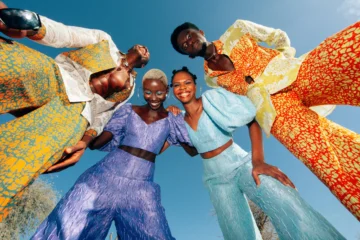Fashion is more than just clothing; it is an art form, a means of self-expression, and a reflection of cultural values and social change. From the intricate designs of haute couture to the everyday styles we wear, fashion plays a significant role in our lives and identities. In this blog, we’ll explore the various facets of fashion, including its history, the interplay of culture and identity, current trends, and the future of the industry.
1. The Evolution of Fashion: A Brief History
Ancient Civilizations
Fashion has deep roots that trace back to ancient civilizations. In Egypt, for instance, linen garments were favored due to the hot climate, while the Greeks celebrated draped fabrics that emphasized the human form. Clothing not only served practical purposes but also indicated social status and cultural identity.
The Middle Ages to the Renaissance
During the Middle Ages, fashion became more structured with the introduction of tailored garments. The Renaissance brought a revival of interest in art and culture, leading to elaborate designs adorned with rich fabrics and intricate embroidery. This period set the stage for the modern understanding of fashion as both an art and a statement.
The Industrial Revolution
The 18th and 19th centuries marked a turning point with the Industrial Revolution, which enabled mass production of clothing. This democratization of fashion allowed broader access to styles that were once exclusive to the wealthy, paving the way for the emergence of fashion as a global industry.
2. Fashion as Cultural Expression
Identity and Personal Style
Fashion is a powerful means of self-expression. It allows individuals to showcase their identities, beliefs, and creativity. The way we dress can reflect our cultural backgrounds, values, and even our moods. For instance, traditional attire often carries deep cultural significance, while contemporary streetwear speaks to urban culture and youth movements.
The Influence of Music and Art
Fashion is heavily influenced by music and the arts. Iconic figures such as David Bowie and Madonna shaped fashion trends that resonated with their music and personas. Likewise, artists like Andy Warhol blurred the lines between art and fashion, highlighting how intertwined these worlds can be.
Globalization and Cross-Cultural Influence
In today’s interconnected world, fashion transcends geographical boundaries. Designers draw inspiration from diverse cultures, leading to unique hybrid styles. However, this globalization also raises questions about cultural appropriation and the ethics of representation in fashion.
3. Current Trends: The Evolution of Style
Sustainable Fashion
With growing awareness of environmental issues, sustainable fashion has emerged as a significant trend. Consumers are increasingly seeking brands that prioritize eco-friendly practices, ethical production, and transparency. Concepts like slow fashion, which emphasizes quality over quantity, are gaining traction.
Tech and Fashion Integration
Technology is reshaping the fashion landscape. From online shopping to virtual fashion shows, digital platforms have revolutionized how consumers engage with brands. Innovations such as smart textiles and 3D printing are also transforming design and production processes, offering new possibilities for creativity and functionality.
Gender Fluidity in Fashion
Modern fashion is increasingly embracing gender fluidity, breaking down traditional barriers between men’s and women’s clothing. Designers are creating collections that cater to diverse identities, allowing individuals to express themselves without conforming to societal norms.
4. The Future of Fashion: Challenges and Innovations
Ethical Considerations
As the fashion industry evolves, ethical considerations are coming to the forefront. Issues such as labor rights, environmental impact, and cultural sensitivity are prompting consumers and brands alike to rethink their practices. The push for transparency and accountability is likely to shape the future of the industry.
The Role of Technology
Advancements in technology will continue to influence fashion, with developments in artificial intelligence, augmented reality, and data analytics playing a significant role in personalization and customer experience. Brands will need to adapt to these changes to remain relevant in a fast-paced market.
Resilience and Adaptability
The COVID-19 pandemic highlighted the need for resilience within the fashion industry. Brands that quickly adapted to changing consumer behaviors—such as increasing online presence and embracing comfort—were better positioned to thrive. The ability to innovate and respond to market demands will be crucial for future success.
Conclusion
Fashion is a vibrant tapestry woven from threads of history, culture, and individual expression. It reflects who we are, where we come from, and how we envision the future. By understanding the complexities of fashion—its evolution, cultural significance, and current trends—we gain a deeper appreciation for this ever-changing art form. As we look ahead, embracing sustainability, ethical practices, and innovative technologies will be key to shaping a fashion industry that respects both people and the planet. Whether you’re a fashion enthusiast or a casual observer, the world of fashion invites us all to explore and express our unique identities.
<code>
<script type=”text/javascript” src=”http://classic.avantlink.com/affiliate_app_confirm.php?mode=js&authResponse=d32531f58dbc0f90d57a8e614da95a3076d96d5f”></script></code>
<code>
<script type="text/javascript" src="http://classic.avantlink.com/affiliate_app_confirm.php?mode=js&authResponse=d32531f58dbc0f90d57a8e614da95a3076d96d5f"></script></code>




